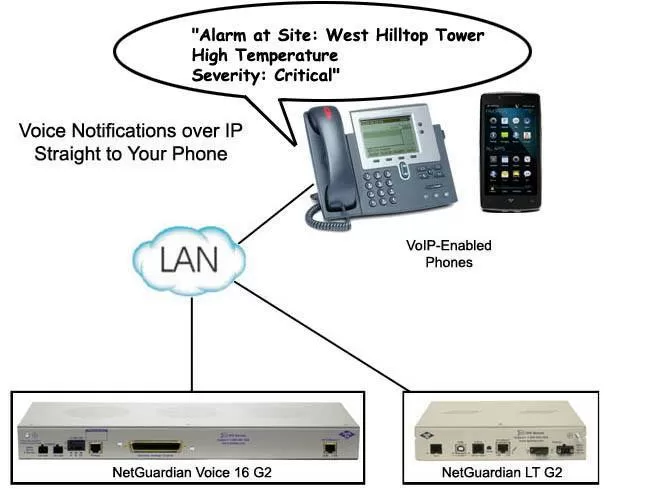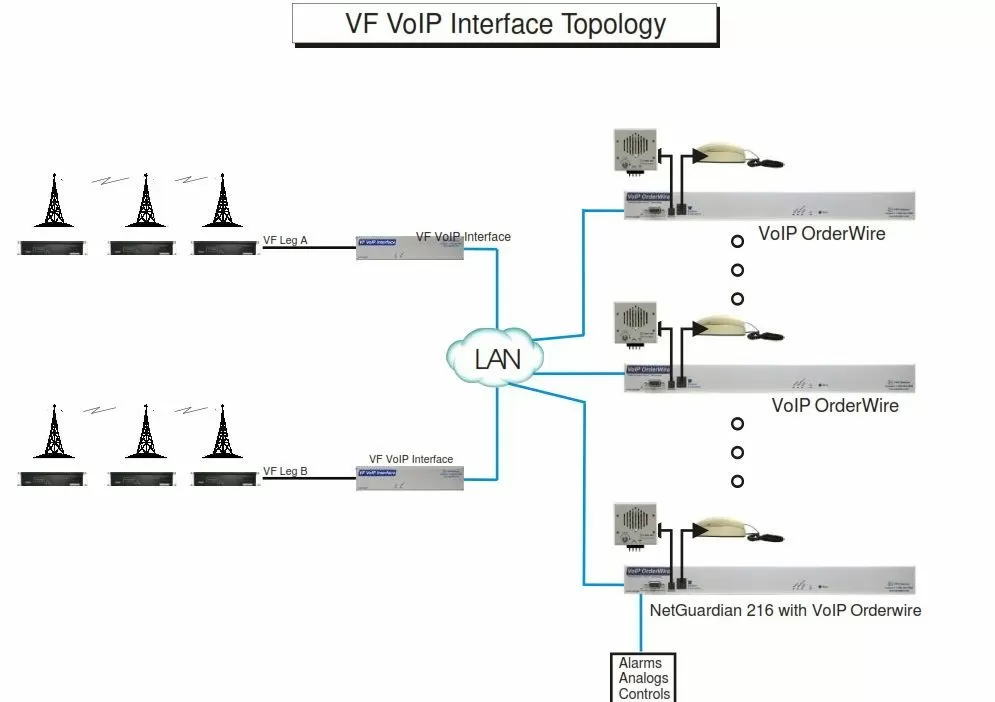Check out our White Paper Series!
A complete library of helpful advice and survival guides for every aspect of system monitoring and control.
1-800-693-0351
Have a specific question? Ask our team of expert engineers and get a specific answer!
Sign up for the next DPS Factory Training!

Whether you're new to our equipment or you've used it for years, DPS factory training is the best way to get more from your monitoring.
Reserve Your Seat TodayDo you suffer from a lack of communication between your remote sites? Is it preventing badly needed communications with technicians in the field? Have you racked up huge long-distance bills trying to keep in touch with your other technicians across your vast network territories?
Imagine this scenario: With your techs getting dispatched all over the place, you've added a ton of extra phone lines, but the level of overall communication doesn't seem to have improved. It's getting costly to keep adding new phone lines. Have you ever been in the middle of nowhere trying to make a call, but there weren't any phone lines or cell phone service?
If you can identify your present situation with the previous example, then you need a Voice over IP solution (VoIP).
What if it were possible to connect everyone in your network, without the hassle of any phone lines?

We've been providing many different remote monitoring solutions for hundreds of clients in the past 30 years. And one of the many systems we've put together consists of a private voice communication system that runs on the existing, unused bandwidth in our client's network - VoIP order wire.
We know how much easier your life can be when your maintenance techs are finally able to easily communicate with one another between sites near and far, without the fear of excessive long-distance charges. Also, a system like this would eliminate communication problems throughout your entire network, allowing techs to coordinate their efforts and report to the dispatch center.
Having effective communication is not only a matter of efficient operations, but safety as well. So, let's dive into the fundamentals of a VoIP system.
Voice over IP, or simply VoIP, as the name suggests, refers to the transmission of voice communications over IP networks. The term "VoIP" is widely used in both consumer and business markets.
For consumers, VoIP normally describes telephone service designed to replace the traditional POTS (Plain Old Telephone Service). The major appeal of this new type of phone service is lower costs, both nationally and worldwide. The savings from routing traffic over the public internet is passed on the subscribing consumers.
Now, in terms of business, Voice over IP coves a much wider range of topics. One large focus is on the network equipment and infrastructure required to offer VoIP equipment in telecom environments. This equipment allows techs and other employees to communicate inexpensively over the company's existing bandwidth.
You can find VoIP equipment bundled with other network management devices in a single rack-mounted case. One example of this is the Voice over IP RTU (Remote Telemetry System), which can integrate remote site monitoring with VoIP functionality.
So, if no one is present at a remote telecom site (which happens more often than not), the RTU functionality provides a means of remotely monitoring and controlling equipment status from a central office. When a technician is on site for either planned or unplanned maintenance, the VoIP capability - usually a singly handset plugged into the unit - allows that technician to communicate with other employees at other locations.
This is especially useful when cell phone reception is poor in a very remote area.
When you choose to invest in a VoIP system, your network will inherently get multiple benefits that will help it become more efficient. Some of these advantages include:
You won't pay for extra lines - order wire runs off the used bandwidth in your existing network.
Achieve economical voice communication by squeezing the muscle from your current bandwidth.
Eliminate long-distance charges by using the order wire system for local calls via a local POTS line.
Establish your own private communication system that's free from central office switching.
Enjoy the benefits of different privacy modes, all call and conferencing features.
Save space with FDP-1000 and FDO-3000 Off-Net, each in one-rack unit chassis.
Use a network-owned, programmable system that grows with your network through expansion cards.
Get the most from your system with order wire accessories: active 4w/4w bridge, 4-wire DTMF phone and speaker.
Identifying the right VoIP solution for your telecom network may seem like a challenging task. Especially if this is your first VoIP solution, you may not know yet how to select the right equipment.
A good practice is to make sure you're selecting VoIP gear that uses a common protocol and codec, such as SIP 2.0 protocol and the G.711 codec. These words may seem like gibberish, but they're important to look for. They'll help you to avoid getting trapped by purchasing one vendor's non-standard protocol. When it comes time to expand your VoIP solution into other areas of your network, your same vendor will be your one and only purchase option.
Also, you should keep your eyes open for versatile VoIP solutions that include other functionality at a small incremental cost. Since most companies with a geodiverse network end up installing VoIP at unmanned remote sites, remote monitoring functionality is a very useful feature set to get bundled with your VoIP system.
So, a good practice is to look for a manufacturer that is able to wrap remote monitoring and control with a VoIP handset in a single 1 RU chassis RTU. This will save you rack space, purchasing and compatibility hassles, and unnecessary installation and maintenance expenses.

The bottom line here is that when you're meticulous about selecting a VoIP system, you can actually find one that is worthy of being called a "solution".
Now, that you know some best practices when selecting a VoIP system, it's important that you know a practical scenario of what an efficient system looks like.
Let's examine the application drawing below:

Simply by looking at this app drawing, we can tell that the company deploying this solution will immediately gain the following benefits:
The VF-VoIP Converter will make older 4-Wire VF order wire legs compatible with modern VoIP. Only one box is required per leg.
The VoIP Order Wire station will allow the company to build a site-to-site VoIP network with telco grade equipment and no central node (no single point of failure).
The VoIP Order Wire with RTU option will give them both site-to-site voice communication and remote monitoring in a single box.
The Order Wire System showed in the application will enable onsite technicians to connect to other stations on the same network.
The Voice over IP (Ethernet) uses the industry standard SIP 2.0 Protocol and the Voice (codec) transmission will use industry standard G.711.
There are several methods of communication, including:
Station-to-Station: Dial directly to another station.
Hoot 'n' Holler: All-call feature that allows you to access the speaker system in all the stations.
An External Speaker is also included in this system and will require mounting on the side of the rack or surface mount. 2-Wire Phone Hand set is also included. The VoIP 216 OW can mount in any 19" or 23" rack and occupies only one rack unit of space.
Overall, the NetGuardian 216 Order Wire used in this application offers an easy, cost-effective way to monitor your remote small sites as well as providing dedicated voice connectivity. The NetGuardian 216 comes equipped with 16 discrete alarm inputs, 4 analog alarm inputs, and 2 control relays outputs.
The VoIP Bridge Server allows multiple VoIP stations to participate on the same call. One VoIP bridge server is required for each concurrent conference call.
This RTU also will provide complete coverage and control of your smaller remote sites with easy installation and configuration. It can report alarms via SNMP to any SNMP manageror via DCP if you have a T/Mon Master.
The integrated web Browser interface will make for easy and convenient alarm management and unit configuration via corporate LAN/WAN or the Internet. The user-friendly interface allows complete access to all the functions of the unit and enables the user to quickly set up alarm point descriptions as well as status monitoring. Advanced Order Wire features can be configured using the included Windows-based software.
The standard NetGuardian 216 Order Wire has rear-panel Amphenol connectors for alarms and LAN connections for transport. An External Speaker is also included and will require mounting on the side of the rack or surface mount.
Usually, the NetGuardian 216 Order wire is available in single or dual -48VDC, +12V or 24V.
In conclusion, this application of VoIP and RTU hybrid was chosen by the customer because they needed the capabilities and advantages below:
Allows staff to communicate via LAN instead of leased telephone lines (Minimum Bandwidth Requirement: at least 128Kbps for peer to peer calls).
Hoot 'n' Holler: Allows to paging all the personnel at once within the order wire system.
16 discretes, 4 analogs, and 2 control relays.
Supports overall important legacy order wire features.
Dialing on the handset - no need to stand right in front of the racks.
Slashes long-distance charges.
Avoid rolling out expensive POTS lines to distant sites.
Quick and easy to install.
Rack-mountable - just 1 RU.
Integrated 7-port hub - saves space, provides Ethernet connectivity for toher equipment.
Multiple power options available, including -48VDC.
The bottom line here is that if you manage any number of network sites, you already know that communicating between them can be a tough job. Cell phones lose signal in remote, rural areas. Running a POTS phone line just for internal communication gets expensive real fast.
As an experienced and trusted remote monitoring manufacturer, we want you to able to design the most cost-effective monitoring solution for your unique network. So, to help you with that, we've written the VoIP Order Wire Tech Brief.
This guide will teach you how to deploy an internal VoIP system between your sites. This will solve both cell phone and dial line headaches. This superior communication channel can go a long way towards reducing your maintenance and repair expenses.
To learn how to choose a VoIP system and what makes an effective system, simply download your free copy of the VoIP Order Wire Tech Brief.

Morgana Siggins
Morgana Siggins is a marketing writer, content creator, and documentation specialist at DPS Telecom. She has created over 200 blog articles and videos sharing her years of experience in the remote monitoring industry.